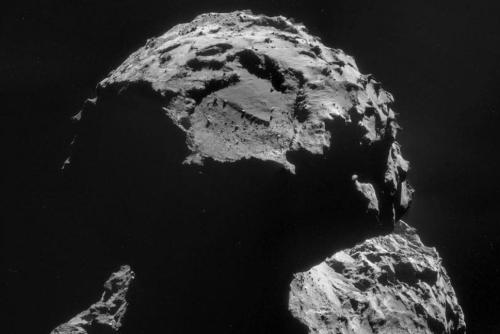
Astronomers and astrobiologists Chandra Wickramasinghe and Max Willis arrived at this bold new assumption based on a theory that the comet’s organic-rich black crust is a product of living organisms present in the comet’s icy interior. Comet 67P, scientists say, contains icy seas and craters underneath its crust which most likely serve as a home for extremophile-like microbes. In other words, the comet could be carrying a host of alien life capable of living in the harshest of elements.
Further adding to the speculation is the fact the Rosetta space probe — the craft responsible for deploying Philae onto the comet — reportedly gathered odd organic material incredibly similar to viral particles as it floated around the comet. Wickramasinghe and Willis plan to report these findings in front of the Royal Astronomical Society’s meeting today in Wales.
The culmination of a 10+ year project, the European Space Agency’s Rosetta space probe reached the orbit of comet 67P/Churyumov-Gerasimenko last August. After studying the 2.5 mile-long comet’s surface for a matter of months, the ESA deployed its Philae spacecraft from the probe and attempted a landing. Unfortunately, the craft didn’t quite land where scientists intended and ran out of battery power just a few short days after reaching the surface.
Dormant for roughly 7 months, the Philae craft awoke from its slumber having sufficiently charged its solar-powered batteries. Operational again, the craft intended to undertake what it set out to do: take samples of the comet’s surface and analyze its chemical composition. Though Wickramasinghe desired to include life-detection device on the craft during planning some 15 years ago, the proposal was ultimately dismissed and the craft took to space purely for data collection. But even without the necessary tools to test for alien life, Wickramasinghe and Willis remain confident the data suggests microbial alien organisms are responsible for the comet’s icy composition.
“These are not easily explained in terms of prebiotic chemistry,” Wickramasinghe tells The Guardian, “the dark material is being constantly replenished as it is boiled off by heat from the sun. Something must be doing that at a fairly prolific rate.”
It appears Philae’s extraordinary journey bears much more scientific fruit than originally thought.